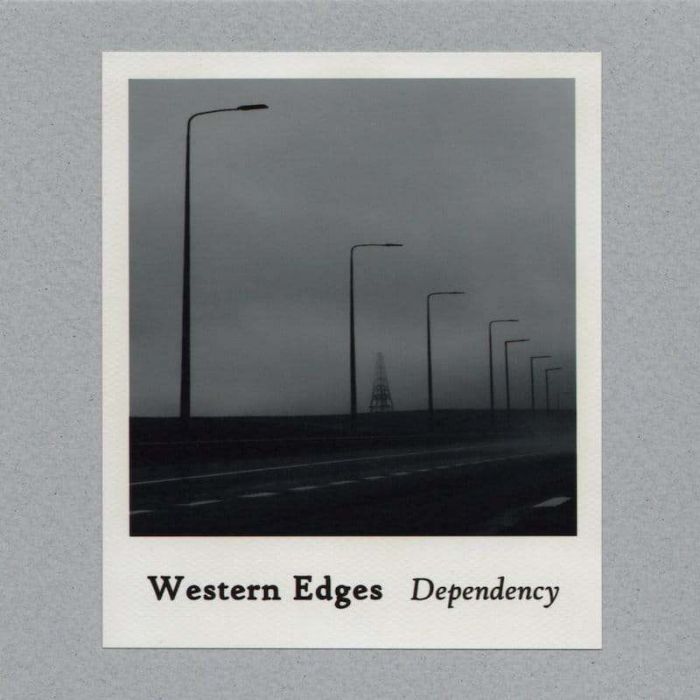Dependency by Western Edges (Review)

I first became aware of Richard Adams via Hood, the iconic post-rock band that he started with his brother Chris in the early ’90s. Since Hood went on permanent hiatus back in 2006, though, he’s been involved in a number of other projects, with the most well-known being The Declining Winter and Memory Drawings.
Both of those bands tap into the same pastoral post-rock that Hood mapped out so well throughout the ’90s and early ’00s. But Adams’ solo work with Western Edges leaves behind the autumnal and pastoral countrysides suggested by his other projects, and instead, delves into the underground garage, techno, and ambient music that so enamored Adams in the ’90s.
However, I fear the use of a term like “techno” might have you thinking that Dependency is full of bangin’ four-on-the-floor beats and euphoric build-ups. There are beats flowing throughout Dependency’s nine songs, but they’re muted and washed out, sounding more like nostalgic ruminations than anything that’ll get people moving on the dance floor. Most of these songs are comprised of washes of equally muted synths and spectral atmospherics that slowly build to a vaguely realized climax.
“Winter Hill” is the best example of this, with heartbeat-like pulses undergirding a distant bassline. Meanwhile, Adams’ synths drift around in the distance, vaporous and intangible. And yet for all of its vagueness, the song still manages to evoke an emotional response through slight key changes. “Lucy Hall Drive” is the album’s most song-like track, with a definable melody (occasionally) emerging from amongst Adams’ synths. By contrast, the aptly titled “So Cold Now” is all foreboding wintry ambience à la Aphex Twin’s Selected Ambient Works Volume II.
Most of Dependency’s songs are under the four-minute mark, but its centerpiece, “Temperance” stretches past fourteen minutes. Traces of beats can be heard as if they’re coming from a discothèque several counties over. Gauzy, washed out electronics are the focus here, and for the song’s first half, they remain intangible alongside indecipherable whispers. More defined sonic structures begin emerging from the fog in the song’s second half, but even then, “Temperance” still remains just barely out of reach.
Dependency might be a tribute to the music of Adams’ past, but don’t expect an accurate historical archive or replica of those decades-old sounds. A covers album this most certainly is not. Given its ambiguous atmospherics, I suspect that Dependency is less an attempt to evoke the actual music “as it was,” and more an attempt to capture on tape Adams’ memories of it — and the era that produced it.
Adams’ music has always had a nostalgic bent, even so far back as Hood. Dependency is no different, and despite its often abstract and highly atmospheric nature, its sense of nostalgia feels particularly distilled and direct. For some, Dependency’s songs might not seem like songs at all, but rather, rough sketches that require a lot of filling in. But that’s often how memory and nostalgia works; the more we try to remember something, the less accurate our memories of it become. We plug in the holes, resulting in something that might not resemble the original at all but still evokes the shape of it while resonating on a deep emotional level.
That’s precisely how Dependency works, and I’ve found it more haunting and captivating with each new listen.